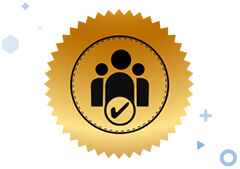اگست ۲٦, ۲۰۲۴ شائع ہوئی 176 نے دیکھا
Conceptualization: Develop visual concepts based on client needs, project briefs, or brand requirements. This may involve brainstorming ideas and collaborating with clients or a creative team.
Design Development: Create original graphics, illustrations, and layouts using design software such as Adobe Creative Suite (Photoshop, Illustrator, InDesign). This includes designing logos, icons, and other visual elements.
Brand Identity: Develop and maintain brand consistency across all visual materials. This involves understanding the brand’s target audience and ensuring all graphics align with the brand’s identity and guidelines.
Print and Digital Media: Design for both print and digital media, including flyers, posters, brochures, banners, social media posts, website graphics, and email templates.
Typography: Select and manage fonts to enhance the readability and visual appeal of the design. This includes creating typographic elements that are visually engaging and easy to read.
Color Theory and Composition: Use color theory to create visually appealing designs and compositions that effectively communicate the intended message.
Collaboration: Work closely with marketing teams, copywriters, photographers, and other designers to produce cohesive, high-quality visuals. This includes participating in brainstorming sessions and incorporating feedback.
Project Management: Manage multiple projects simultaneously, prioritize tasks, and meet deadlines. This often involves maintaining communication with clients or team members to ensure projects are on track.
Research and Trends: Stay updated with the latest design trends, tools, and technologies to keep skills fresh and relevant. This may include attending workshops, taking online courses, or participating in design communities.
Feedback and Revision: Receive and incorporate feedback from clients or team members. This may involve making revisions to the designs and ensuring the final output meets the project requirements.
Quality Assurance: Review final designs for errors and ensure that the output is of high quality, ready for publication or printing. This may involve checking for consistency in design elements, ensuring correct color profiles for print, and verifying that digital assets are optimized for web or mobile use.
User Experience (UX) Design: For web and digital projects, consider the user experience and ensure that designs are user-friendly, accessible, and enhance the overall experience.
Required Skills and Qualifications:
Technical Skills: Proficiency in design software such as Adobe Creative Suite (Photoshop, Illustrator, InDesign, After Effects), Sketch, Figma, or other relevant tools.
Creative Skills: Strong artistic ability, creativity, and an eye for detail.
Communication Skills: Good verbal and written communication skills to effectively convey ideas and collaborate with clients and team members.
Time Management: Ability to manage multiple projects and meet deadlines.
Problem-Solving Skills: Ability to think critically and solve design-related problems creatively.
Portfolio: A strong portfolio demonstrating a range of design work and creativity.
Education: A degree in graphic design, visual arts, or a related field is often preferred but not always required.
نوکری کی تفصیلات
Tor Skills Triangle
















